Businesses are increasingly deploying multiple machine learning (ML) models to serve precise and accurate predictions to their consumers. Consider a media company that wants to provide recommendations to its subscribers. The company may want to employ different custom models for recommending different categories of products—such as movies, books, music, and articles. If the company wants to add personalization to the recommendations by using individual subscriber information, the number of custom models further increases. Hosting each custom model on a distinct compute instance is not only cost prohibitive, but also leads to underutilization of the hosting resources if not all models are frequently used.
Amazon SageMaker is a fully managed service that enables developers and data scientists to quickly and easily build, train, and deploy ML models at any scale. After you train an ML model, you can deploy it on Amazon SageMaker endpoints that are fully managed and can serve inferences in real time with low latency. Amazon SageMaker multi-model endpoints (MMEs) are a cost-effective solution to deploy a large number of ML models or per-user models. You can deploy multiple models on a single multi-model enabled endpoint such that all models share the compute resources and the serving container. You get significant cost savings and also simplify model deployments and updates. For more information about MME, see Save on inference costs by using Amazon SageMaker multi-model endpoints.
The following diagram depicts how MMEs work.

Multiple model artifacts are persisted in an Amazon S3 bucket. When a specific model is invoked, Amazon SageMaker dynamically loads it onto the container hosting the endpoint. If the model is already loaded in the container’s memory, invocation is faster because Amazon SageMaker doesn’t need to download and load it.
Until now, you could use MME with several frameworks, such as TensorFlow, PyTorch, MXNet, SKLearn, and build your own container with a multi-model server. This post introduces the following feature enhancements to MME:
- MME support for Amazon SageMaker built-in algorithms – MME is now supported natively in the following popular Amazon SageMaker built-in algorithms: XGBoost, linear learner, RCF, and KNN. You can directly use the Amazon SageMaker provided containers while using these algorithms without having to build your own custom container.
- MME support for Amazon SageMaker inference pipelines – The Amazon SageMaker inference pipeline model consists of a sequence of containers that serve inference requests by combining preprocessing, predictions, and postprocessing data science tasks. An inference pipeline allows you to reuse the same preprocessing code used during model training to process the inference request data used for predictions. You can now deploy an inference pipeline on an MME where one of the containers in the pipeline can dynamically serve requests based on the model being invoked.
- IAM condition keys for granular access to models – Prior to this enhancement, an AWS Identity and Access Management (IAM) principal with
InvokeEndpoint permission on the endpoint resource could invoke all the models hosted on that endpoint. Now, we support granular access to models using IAM condition keys. For example, the following IAM condition restricts the principal’s access to a model persisted in the Amazon Simple Storage Service (Amazon S3) bucket with company_a or common prefixes:
Condition": {
"StringLike": {
"sagemaker:TargetModel": ["company_a/*", "common/*"]
}
}
We also provide a fully functional notebook to demonstrate these enhancements.
Walkthrough overview
To demonstrate these capabilities, the notebook discusses the use case of predicting house prices in multiple cities using linear regression. House prices are predicted based on features like number of bedrooms, number of garages, square footage, and more. Depending on the city, the features affect the house price differently. For example, small changes in the square footage cause a drastic change in house prices in New York City when compared to price changes in Houston.
For accurate house price predictions, we train multiple linear regression models, with a unique location-specific model per city. Each location-specific model is trained on synthetic housing data with randomly generated characteristics. To cost-effectively serve the multiple housing price prediction models, we deploy the models on a single multi-model enabled endpoint, as shown in the following diagram.

The walkthrough includes the following high-level steps:
- Examine the synthetic housing data generated.
- Preprocess the raw housing data using Scikit-learn.
- Train regression models using the built-in Amazon SageMaker linear learner algorithm.
- Create an Amazon SageMaker model with multi-model support.
- Create an Amazon SageMaker inference pipeline with an Sklearn model and multi-model enabled linear learner model.
- Test the inference pipeline by getting predictions from the different linear learner models.
- Update the MME with new models.
- Monitor the MME with Amazon CloudWatch
- Explore fine-grained access to models hosted on the MME using IAM condition keys.
Other steps necessary to import libraries, set up IAM permissions, and use utility functions are defined in the notebook, which this post doesn’t discuss. You can walk through and run the code with the following notebook on the GitHub repo.
Examining the synthetic housing data
The dataset consists of six numerical features that capture the year the house was built, house size in square feet, number of bedrooms, number of bathrooms, lot size, number of garages, and two categorical features: deck and front porch, indicating whether these are present or not.
To see the raw data, enter the following code:
The following screenshot shows the results.

You can now preprocess the categorical variables (front_porch and deck) using Scikit-learn.
Preprocessing the raw housing data
To preprocess the raw data, you first create an SKLearn estimator and use the sklearn_preprocessor.py script as the entry_point:
#Create the SKLearn estimator with the sklearn_preprocessor.py as the script
from sagemaker.sklearn.estimator import SKLearn
script_path = 'sklearn_preprocessor.py'
sklearn_preprocessor = SKLearn(
entry_point=script_path,
role=role,
train_instance_type="ml.c4.xlarge",
sagemaker_session=sagemaker_session_gamma)
You then launch multiple Scikit-learn training jobs to process the raw synthetic data generated for multiple locations. Before running the following code, take the training instance limits in your account and cost into consideration and adjust the PARALLEL_TRAINING_JOBS value accordingly:
preprocessor_transformers = []
for index, loc in enumerate(LOCATIONS[:PARALLEL_TRAINING_JOBS]):
print("preprocessing fit input data at ", index , " for loc ", loc)
job_name='scikit-learn-preprocessor-{}'.format(strftime('%Y-%m-%d-%H-%M-%S', gmtime()))
sklearn_preprocessor.fit({'train': train_inputs[index]}, job_name=job_name, wait=True)
##Once the preprocessor is fit, use tranformer to preprocess the raw training data and store the transformed data right back into s3.
transformer = sklearn_preprocessor.transformer(
instance_count=1,
instance_type='ml.m4.xlarge',
assemble_with='Line',
accept='text/csv'
)
preprocessor_transformers.append(transformer)
When the preprocessors are properly fitted, preprocess the training data using batch transform to directly preprocess the raw data and store back into Amazon S3:
preprocessed_train_data_path = []
for index, transformer in enumerate(preprocessor_transformers):
transformer.transform(train_inputs[index], content_type='text/csv')
print('Launching batch transform job:
{}'.format(transformer.latest_transform_job.job_name))
preprocessed_train_data_path.append(transformer.output_path)
Training regression models
In this step, you train multiple models, one for each location.
Start by accessing the built-in linear learner algorithm:
from sagemaker.amazon.amazon_estimator import get_image_uri
container = get_image_uri(boto3.Session().region_name, 'linear-learner')
container
Depending on the Region you’re using, you receive output similar to the following:
382416733822.dkr.ecr.us-east-1.amazonaws.com/linear-learner:1
Next, define a method to launch a training job for a single location using the Amazon SageMaker Estimator API. In the hyperparameter configuration, you use predictor_type='regressor' to indicate that you’re using the algorithm to train a regression model. See the following code:
def launch_training_job(location, transformer):
"""Launch a linear learner traing job"""
train_inputs = '{}/{}'.format(transformer.output_path, "train.csv")
val_inputs = '{}/{}'.format(transformer.output_path, "val.csv")
print("train_inputs:", train_inputs)
print("val_inputs:", val_inputs)
full_output_prefix = '{}/model_artifacts/{}'.format(DATA_PREFIX, location)
s3_output_path = 's3://{}/{}'.format(BUCKET, full_output_prefix)
print("s3_output_path ", s3_output_path)
s3_output_path = 's3://{}/{}/model_artifacts/{}'.format(BUCKET, DATA_PREFIX, location)
linear_estimator = sagemaker.estimator.Estimator(
container,
role,
train_instance_count=1,
train_instance_type='ml.c4.xlarge',
output_path=s3_output_path,
sagemaker_session=sagemaker_session)
linear_estimator.set_hyperparameters(
feature_dim=10,
mini_batch_size=100,
predictor_type='regressor',
epochs=10,
num_models=32,
loss='absolute_loss')
DISTRIBUTION_MODE = 'FullyReplicated'
train_input = sagemaker.s3_input(s3_data=train_inputs,
distribution=DISTRIBUTION_MODE, content_type='text/csv;label_size=1')
val_input = sagemaker.s3_input(s3_data=val_inputs,
distribution=DISTRIBUTION_MODE, content_type='text/csv;label_size=1')
remote_inputs = {'train': train_input, 'validation': val_input}
linear_estimator.fit(remote_inputs, wait=False)
return linear_estimator.latest_training_job.name
You can now start multiple model training jobs, one for each location. Make sure to choose the correct value for PARALLEL TRAINING_JOBS, taking your AWS account service limits and cost into consideration. In the notebook, this value is set to 4. See the following code:
training_jobs = []
for transformer, loc in zip(preprocessor_transformers, LOCATIONS[:PARALLEL_TRAINING_JOBS]):
job = launch_training_job(loc, transformer)
training_jobs.append(job)
print('{} training jobs launched: {}'.format(len(training_jobs), training_jobs))
You receive output similar to the following:
4 training jobs launched: [(<sagemaker.estimator.Estimator object at 0x7fb54784b6d8>, 'linear-learner-2020-06-03-03-51-26-548'), (<sagemaker.estimator.Estimator object at 0x7fb5478b3198>, 'linear-learner-2020-06-03-03-51-26-973'), (<sagemaker.estimator.Estimator object at 0x7fb54780dbe0>, 'linear-learner-2020-06-03-03-51-27-775'), (<sagemaker.estimator.Estimator object at 0x7fb5477664e0>, 'linear-learner-2020-06-03-03-51-31-457')]
Wait until all training jobs are complete before proceeding to the next step.
Creating an Amazon SageMaker model with multi-model support
When the training jobs are complete, you’re ready to create an MME.
First, define a method to copy model artifacts from the training job output to a location in Amazon S3 where the MME dynamically loads individual models:
def deploy_artifacts_to_mme(job_name):
print("job_name :", job_name)
response = sm_client.describe_training_job(TrainingJobName=job_name)
source_s3_key,model_name = parse_model_artifacts(response['ModelArtifacts']['S3ModelArtifacts'])
copy_source = {'Bucket': BUCKET, 'Key': source_s3_key}
key = '{}/{}/{}/{}.tar.gz'.format(DATA_PREFIX, MULTI_MODEL_ARTIFACTS, model_name, model_name)
print('Copying {} modeln from: {}n to: {}...'.format(model_name, source_s3_key, key))
s3_client.copy_object(Bucket=BUCKET, CopySource=copy_source, Key=key)
Copy the model artifacts from all the training jobs to this location:
## Deploy all but the last model trained to MME
for job_name in training_jobs[:-1]:
deploy_artifacts_to_mme(job_name)
You receive output similar to the following:
linear-learner-2020-06-03-03-51-26-973
Copying LosAngeles_CA model
from: DEMO_MME_LINEAR_LEARNER/model_artifacts/LosAngeles_CA/linear-learner-2020-06-03-03-51-26-973/output/model.tar.gz
to: DEMO_MME_LINEAR_LEARNER/multi_model_artifacts/LosAngeles_CA/LosAngeles_CA.tar.gz...
linear-learner-2020-06-03-03-51-27-775
Copying Chicago_IL model
from: DEMO_MME_LINEAR_LEARNER/model_artifacts/Chicago_IL/linear-learner-2020-06-03-03-51-27-775/output/model.tar.gz
to: DEMO_MME_LINEAR_LEARNER/multi_model_artifacts/Chicago_IL/Chicago_IL.tar.gz...
linear-learner-2020-06-03-03-51-31-457
Create the Amazon SageMaker model entity using the MultiDataModel API:
MODEL_NAME = '{}-{}'.format(HOUSING_MODEL_NAME, strftime('%Y-%m-%d-%H-%M-%S', gmtime()))
_model_url = 's3://{}/{}/{}/'.format(BUCKET, DATA_PREFIX, MULTI_MODEL_ARTIFACTS)
ll_multi_model = MultiDataModel(
name=MODEL_NAME,
model_data_prefix=_model_url,
image=container,
role=role,
sagemaker_session=sagemaker
Creating an inference pipeline
Set up an inference pipeline with the PipelineModel API. This sets up a list of models in a single endpoint; for this post, we configure our pipeline model with the fitted Scikit-learn inference model and the fitted MME linear learner model. See the following code:
from sagemaker.model import Model
from sagemaker.pipeline import PipelineModel
import boto3
from time import gmtime, strftime
timestamp_prefix = strftime("%Y-%m-%d-%H-%M-%S", gmtime())
scikit_learn_inference_model = sklearn_preprocessor.create_model()
model_name = '{}-{}'.format('inference-pipeline', timestamp_prefix)
endpoint_name = '{}-{}'.format('inference-pipeline-ep', timestamp_prefix)
sm_model = PipelineModel(
name=model_name,
role=role,
sagemaker_session=sagemaker_session,
models=[
scikit_learn_inference_model,
ll_multi_model])
sm_model.deploy(initial_instance_count=1, instance_type='ml.m4.xlarge', endpoint_name=endpoint_name)
The MME is now ready to take inference requests and respond with predictions. With the MME, the inference request should include the target model to invoke.
Testing the inference pipeline
You can now get predictions from the different linear learner models. Create a RealTimePredictor with the inference pipeline endpoint:
from sagemaker.predictor import json_serializer, csv_serializer, json_deserializer, RealTimePredictor
from sagemaker.content_types import CONTENT_TYPE_CSV, CONTENT_TYPE_JSON
predictor = RealTimePredictor(
endpoint=endpoint_name,
sagemaker_session=sagemaker_session,
serializer=csv_serializer,
content_type=CONTENT_TYPE_CSV,
accept=CONTENT_TYPE_JSON)
Define a method to get predictions from the RealTimePredictor:
def predict_one_house_value(features, model_name, predictor_to_use):
print('Using model {} to predict price of this house: {}'.format(model_name,
features))
body = ','.join(map(str, features)) + 'n'
start_time = time.time()
response = predictor_to_use.predict(features, target_model=model_name)
response_json = json.loads(response)
predicted_value = response_json['predictions'][0]['score']
duration = time.time() - start_time
print('${:,.2f}, took {:,d} msn'.format(predicted_value, int(duration * 1000)))
With MME, the models are dynamically loaded into the container’s memory of the instance hosting the endpoint when invoked. Therefore, the model invocation may take longer when it’s invoked for the first time. When the model is already in the instance container’s memory, the subsequent invocations are faster. If an instance memory utilization is high and a new model needs to be loaded, unused models are unloaded. The unloaded models remain in the instance’s storage volume and can be loaded into container’s memory later without being downloaded from the S3 bucket again. If the instance’s storage volume is full, unused models are deleted from storage volume.
Amazon SageMaker fully manages the loading and unloading of the models, without you having to take any specific actions. However, it’s important to understand this behavior because it has implications on the model invocation latency.
Iterate through invocations with random inputs against a random model and show the predictions and the time it takes for the prediction to come back:
for i in range(10):
model_name = LOCATIONS[np.random.randint(1, len(LOCATIONS[:PARALLEL_TRAINING_JOBS]))]
full_model_name = '{}/{}.tar.gz'.format(model_name,model_name)
predict_one_house_value(gen_random_house()[1:], full_model_name,runtime_sm_client)
You receive output similar to the following:
Using model Chicago_IL/Chicago_IL.tar.gz to predict price of this house: [1993, 2728, 6, 3.0, 0.7, 1, 'y', 'y']
$439,972.62, took 1,166 ms
Using model Houston_TX/Houston_TX.tar.gz to predict price of this house: [1989, 1944, 5, 3.0, 1.0, 1, 'n', 'y']
$280,848.00, took 1,086 ms
Using model LosAngeles_CA/LosAngeles_CA.tar.gz to predict price of this house: [1968, 2427, 4, 3.0, 1.0, 2, 'y', 'n']
$266,721.31, took 1,029 ms
Using model Chicago_IL/Chicago_IL.tar.gz to predict price of this house: [2000, 4024, 2, 1.0, 0.82, 1, 'y', 'y']
$584,069.88, took 53 ms
Using model LosAngeles_CA/LosAngeles_CA.tar.gz to predict price of this house: [1986, 3463, 5, 3.0, 0.9, 1, 'y', 'n']
$496,340.19, took 43 ms
Using model Chicago_IL/Chicago_IL.tar.gz to predict price of this house: [2002, 3885, 4, 3.0, 1.16, 2, 'n', 'n']
$626,904.12, took 39 ms
Using model Chicago_IL/Chicago_IL.tar.gz to predict price of this house: [1992, 1531, 6, 3.0, 0.68, 1, 'y', 'n']
$257,696.17, took 36 ms
Using model Chicago_IL/Chicago_IL.tar.gz to predict price of this house: [1992, 2327, 2, 3.0, 0.59, 3, 'n', 'n']
$337,758.22, took 33 ms
Using model LosAngeles_CA/LosAngeles_CA.tar.gz to predict price of this house: [1995, 2656, 5, 1.0, 1.16, 0, 'y', 'n']
$390,652.59, took 35 ms
Using model LosAngeles_CA/LosAngeles_CA.tar.gz to predict price of this house: [2000, 4086, 2, 3.0, 1.03, 3, 'n', 'y']
$632,995.44, took 35 ms
The output that shows the predicted house price and the time it took for the prediction.
You should consider two different invocations of the same model. The second time, you don’t need to download from Amazon S3 because they’re already present on the instance. You see the inferences return in less time than before. For this use case, the invocation time for the Chicago_IL/Chicago_IL.tar.gz model reduced from 1,166 milliseconds the first time to 53 milliseconds the second time. Similarly, the invocation time for the LosAngeles_CA /LosAngeles_CA.tar.gz model reduced from 1,029 milliseconds to 43 milliseconds.
Updating an MME with new models
To deploy a new model to an existing MME, copy a new set of model artifacts to the same Amazon S3 location you set up earlier. For example, copy the model for the Houston location with the following code:
## Copy the last model
last_training_job=training_jobs[PARALLEL_TRAINING_JOBS-1]
deploy_artifacts_to_mme(last_training_job)
Now you can make predictions using the last model. See the following code:
model_name = LOCATIONS[PARALLEL_TRAINING_JOBS-1]
full_model_name = '{}/{}.tar.gz'.format(model_name,model_name)
predict_one_house_value(gen_random_house()[:-1], full_model_name,predictor)
Monitoring MMEs with CloudWatch metrics
Amazon SageMaker provides CloudWatch metrics for MMEs so you can determine the endpoint usage and the cache hit rate and optimize your endpoint. To analyze the endpoint and the container behavior, you invoke multiple models in this sequence:
##Create 200 copies of the original model and save with different names.
copy_additional_artifacts_to_mme(200)
##Starting with no models loaded into the container
##Invoke the first 100 models
invoke_multiple_models_mme(0,100)
##Invoke the same 100 models again
invoke_multiple_models_mme(0,100)
##This time invoke all 200 models to observe behavior
invoke_multiple_models_mme(0,200)
The following chart shows the behavior of the CloudWatch metrics LoadedModelCount and MemoryUtilization corresponding to these model invocations.

The LoadedModelCount metric continuously increases as more models are invoked, until it levels off at 121. The MemoryUtilization metric of the container also increased correspondingly to around 79%. This shows that the instance chosen to host the endpoint could only maintain 121 models in memory when 200 model invocations were made.
The following chart adds the ModelCacheHit metric to the previous two.

As the number of models loaded to the container memory increase, the ModelCacheHit metric improves. When the same 100 models are invoked the second time, ModelCacheHit reaches 1. When new models not yet loaded are invoked, ModelCacheHit decreases again.
You can use CloudWatch charts to help make ongoing decisions on the optimal choice of instance type, instance count, and number of models that a given endpoint should host.
Exploring granular access to models hosted on an MME
Because of the role attached to the notebook instance, it can invoke all models hosted on the MME. However, you can restrict this model invocation access to specific models by using IAM condition keys. To explore this, you create a new IAM role and IAM policy with a condition key to restrict access to a single model. You then assume this new role and verify that only a single target model can be invoked.
The role assigned to the Amazon SageMaker notebook instance should allow IAM role and IAM policy creation for the next steps to be successful.
Create an IAM role with the following code:
#Create a new role that can be assumed by this notebook. The roles should allow access to only a single model.
path='/'
role_name="{}{}".format('allow_invoke_ny_model_role', strftime('%Y-%m-%d-%H-%M-%S', gmtime()))
description='Role that allows invoking a single model'
action_string = "sts:AssumeRole"
trust_policy={
"Version": "2012-10-17",
"Statement": [
{
"Sid": "statement1",
"Effect": "Allow",
"Principal": {
"AWS": role
},
"Action": "sts:AssumeRole"
}
]
}
response = iam_client.create_role(
Path=path,
RoleName=role_name,
AssumeRolePolicyDocument=json.dumps(trust_policy),
Description=description,
MaxSessionDuration=3600
)
print(response)
Create an IAM policy with a condition key to restrict access to only the NewYork model:
managed_policy = {
"Version": "2012-10-17",
"Statement": [
{
"Sid": "SageMakerAccess",
"Action": "sagemaker:InvokeEndpoint",
"Effect": "Allow",
"Resource":endpoint_resource_arn,
"Condition": {
"StringLike": {
"sagemaker:TargetModel": ["NewYork_NY/*"]
}
}
}
]
}
response = iam_client.create_policy(
PolicyName='allow_invoke_ny_model_policy',
PolicyDocument=json.dumps(managed_policy)
)
Attach the IAM policy to the IAM role:
iam_client.attach_role_policy(
PolicyArn=policy_arn,
RoleName=role_name
)
Assume the new role and create a RealTimePredictor object runtime client:
## Invoke with the role that has access to only NY model
sts_connection = boto3.client('sts')
assumed_role_limited_access = sts_connection.assume_role(
RoleArn=role_arn,
RoleSessionName="MME_Invoke_NY_Model"
)
assumed_role_limited_access['AssumedRoleUser']['Arn']
#Create sagemaker runtime client with assumed role
ACCESS_KEY = assumed_role_limited_access['Credentials']['AccessKeyId']
SECRET_KEY = assumed_role_limited_access['Credentials']['SecretAccessKey']
SESSION_TOKEN = assumed_role_limited_access['Credentials']['SessionToken']
runtime_sm_client_with_assumed_role = boto3.client(
service_name='sagemaker-runtime',
aws_access_key_id=ACCESS_KEY,
aws_secret_access_key=SECRET_KEY,
aws_session_token=SESSION_TOKEN,
)
#SageMaker session with the assumed role
sagemakerSessionAssumedRole = sagemaker.Session(sagemaker_runtime_client=runtime_sm_client_with_assumed_role)
#Create a RealTimePredictor with the assumed role.
predictorAssumedRole = RealTimePredictor(
endpoint=endpoint_name,
sagemaker_session=sagemakerSessionAssumedRole,
serializer=csv_serializer,
content_type=CONTENT_TYPE_CSV,
accept=CONTENT_TYPE_JSON)
Now invoke the NewYork_NY model:
full_model_name = 'NewYork_NY/NewYork_NY.tar.gz'
predict_one_house_value(gen_random_house()[:-1], full_model_name, predictorAssumedRole)
You receive output similar to the following:
Using model NewYork_NY/NewYork_NY.tar.gz to predict price of this house: [1992, 1659, 2, 2.0, 0.87, 2, 'n', 'y']
$222,008.38, took 154 ms
Next, try to invoke a different model (Chicago_IL/Chicago_IL.tar.gz). This should throw an error because the assumed role isn’t authorized to invoke this model. See the following code:
full_model_name = 'Chicago_IL/Chicago_IL.tar.gz'
predict_one_house_value(gen_random_house()[:-1], full_model_name,predictorAssumedRole)
You receive output similar to the following:
ClientError: An error occurred (AccessDeniedException) when calling the InvokeEndpoint operation: User: arn:aws:sts::xxxxxxxxxxxx:assumed-role/allow_invoke_ny_model_role/MME_Invoke_NY_Model is not authorized to perform: sagemaker:InvokeEndpoint on resource: arn:aws:sagemaker:us-east-1:xxxxxxxxxxxx:endpoint/inference-pipeline-ep-2020-07-01-15-46-51
Conclusion
Amazon SageMaker MMEs are a very powerful tool for teams developing multiple ML models to save significant costs and lower deployment overhead for a large number of ML models. This post discussed the new capabilities of Amazon SageMaker MMEs: native integration with Amazon SageMaker built-in algorithms (such as linear learner and KNN), native integration with inference pipelines, and fine-grained controlled access to the multiple models hosted on a single endpoint using IAM condition keys.
The notebook included with the post provided detailed instructions on training multiple linear learner models for house price predictions for multiple locations, hosting all the models on a single MME, and controlling access to the individual models.When considering multi-model enabled endpoints, you should balance the cost savings and the latency requirements.
Give Amazon SageMaker MMEs a try and leave your feedback in the comments.
About the Author
 Sireesha Muppala is a AI/ML Specialist Solutions Architect at AWS, providing guidance to customers on architecting and implementing machine learning solutions at scale. She received her Ph.D. in Computer Science from University of Colorado, Colorado Springs. In her spare time, Sireesha loves to run and hike Colorado trails.
Sireesha Muppala is a AI/ML Specialist Solutions Architect at AWS, providing guidance to customers on architecting and implementing machine learning solutions at scale. She received her Ph.D. in Computer Science from University of Colorado, Colorado Springs. In her spare time, Sireesha loves to run and hike Colorado trails.
 Michael Pham is a Software Development Engineer in the Amazon SageMaker team. His current work focuses on helping developers efficiently host machine learning models. In his spare time he enjoys Olympic weightlifting, reading, and playing chess.
Michael Pham is a Software Development Engineer in the Amazon SageMaker team. His current work focuses on helping developers efficiently host machine learning models. In his spare time he enjoys Olympic weightlifting, reading, and playing chess.
Read More











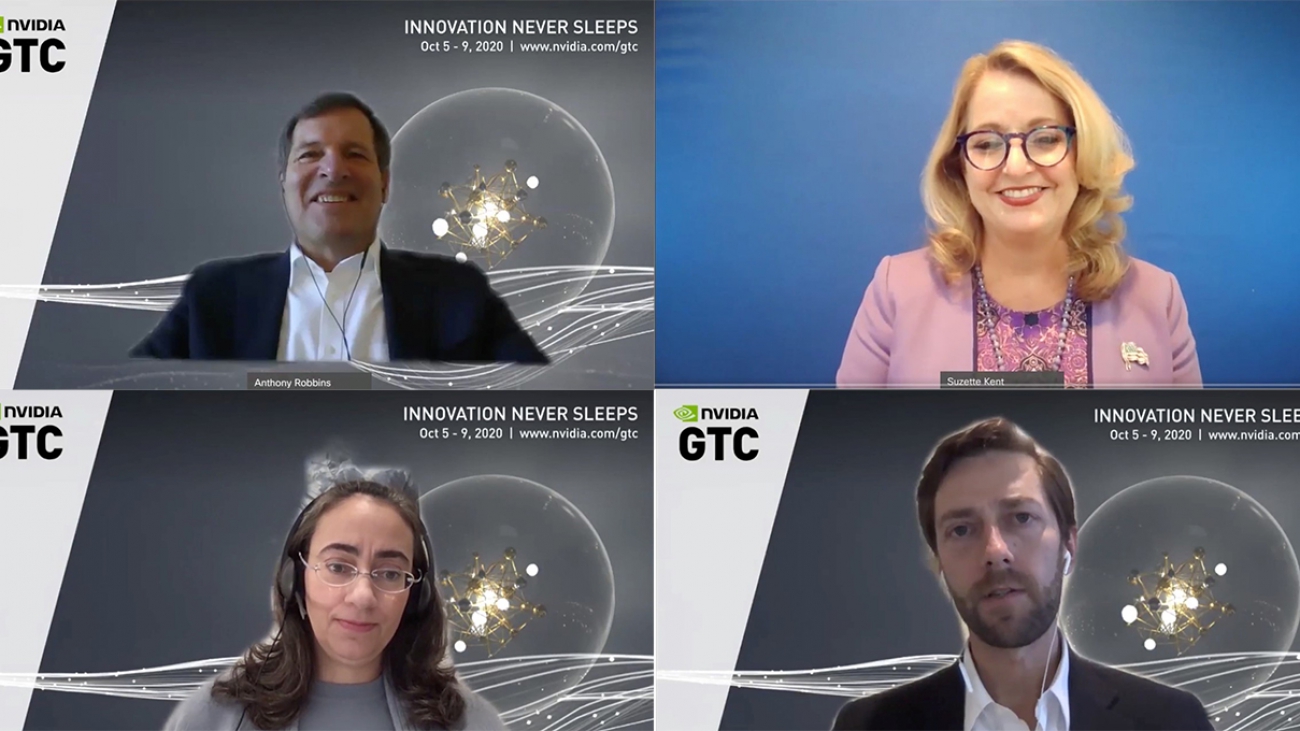

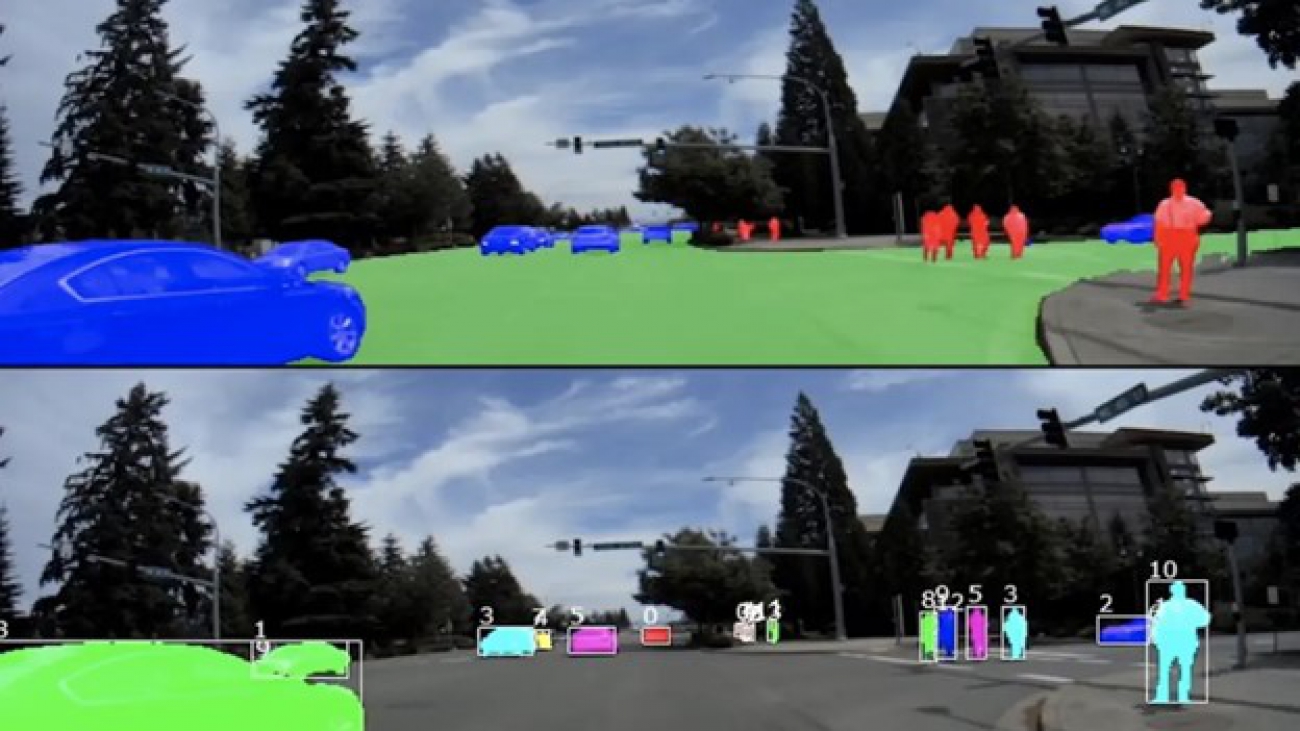

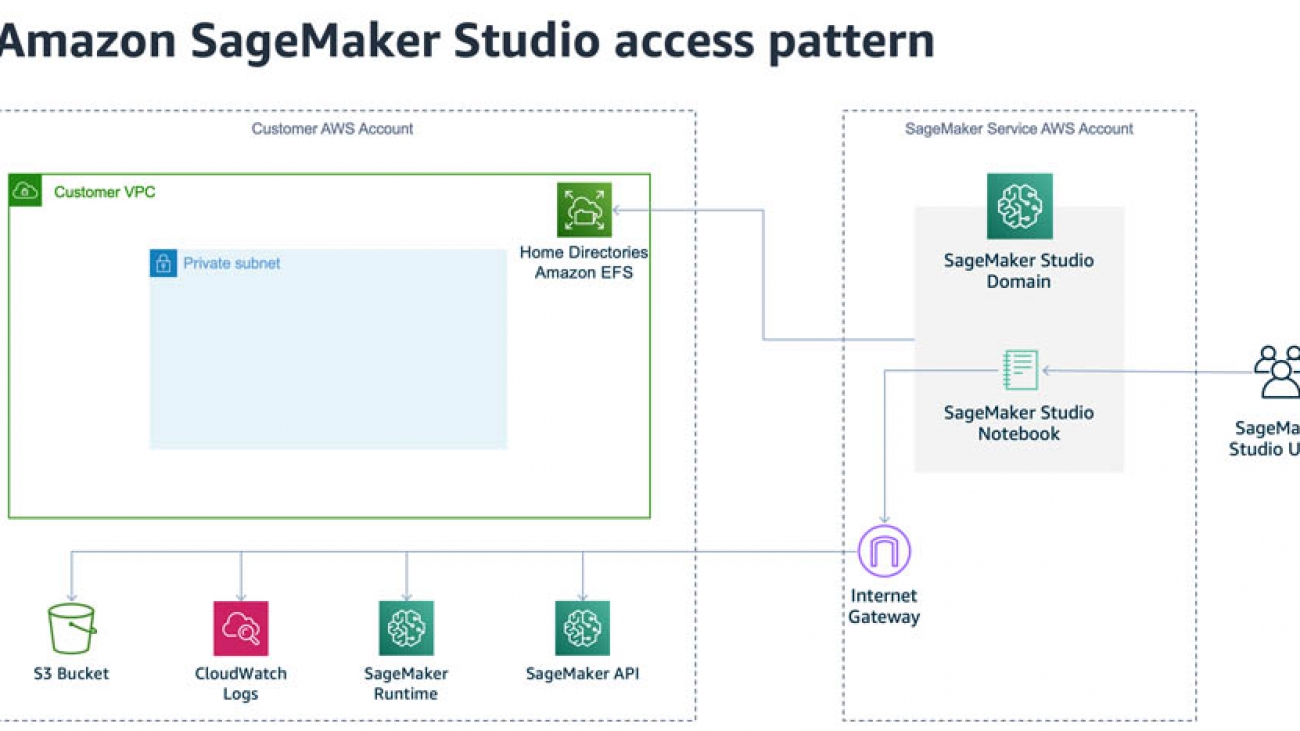

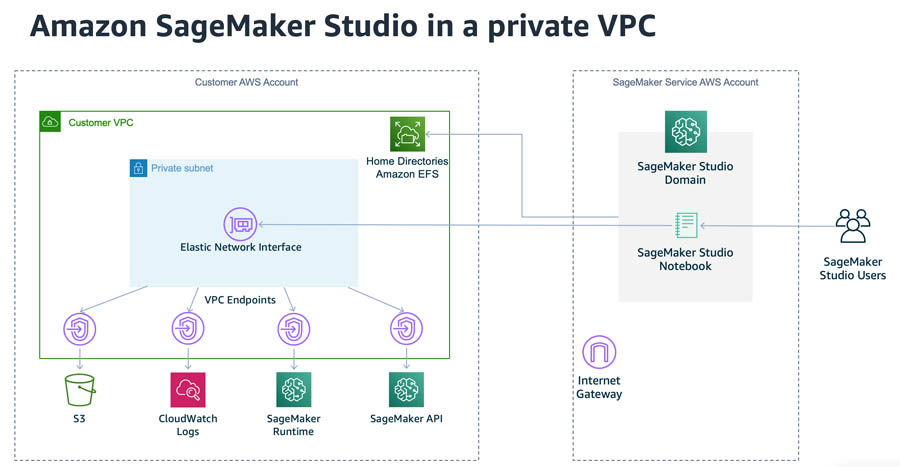

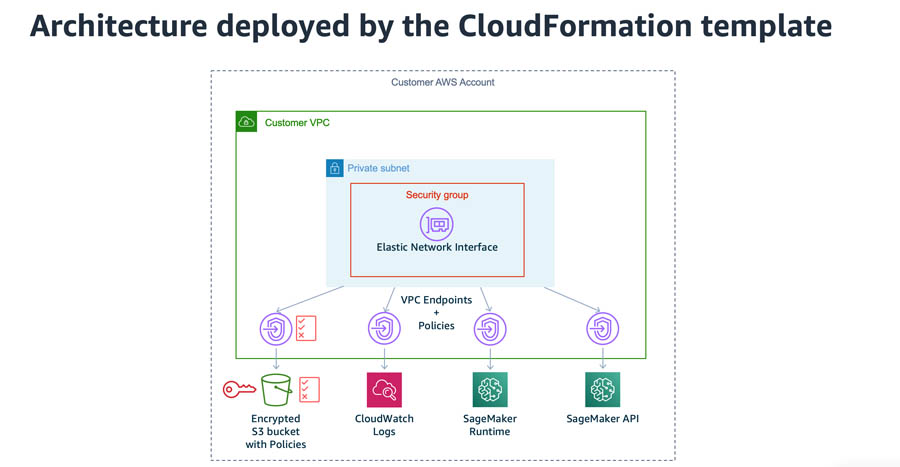

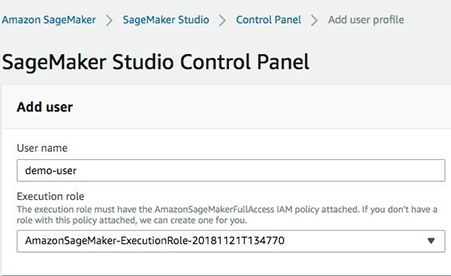


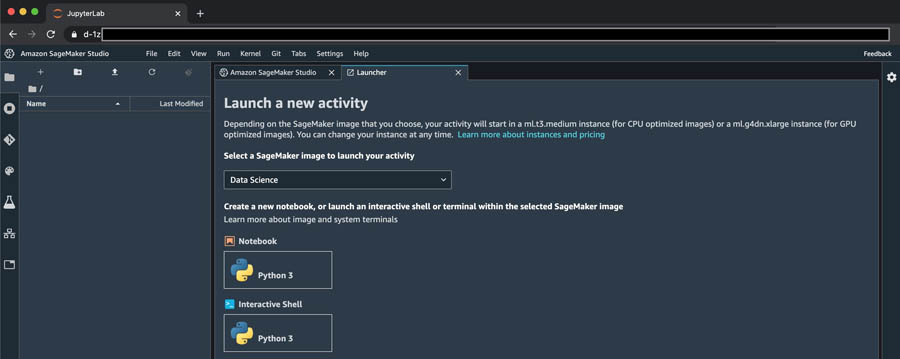





 Stefan Natu is a Sr. Machine Learning Specialist at Amazon Web Services. He is focused on helping financial services customers build end-to-end machine learning solutions on AWS. In his spare time, he enjoys reading machine learning blogs, playing the guitar, and exploring the food scene in New York City.
Stefan Natu is a Sr. Machine Learning Specialist at Amazon Web Services. He is focused on helping financial services customers build end-to-end machine learning solutions on AWS. In his spare time, he enjoys reading machine learning blogs, playing the guitar, and exploring the food scene in New York City. Han Zhang is a Software Development Engineer at Amazon Web Services. She is part of the launch team for Amazon SageMaker Notebooks and Amazon SageMaker Studio, and has been focusing on building secure machine learning environments for customers. In her spare time, she enjoys hiking and skiing in the Pacific Northwest.
Han Zhang is a Software Development Engineer at Amazon Web Services. She is part of the launch team for Amazon SageMaker Notebooks and Amazon SageMaker Studio, and has been focusing on building secure machine learning environments for customers. In her spare time, she enjoys hiking and skiing in the Pacific Northwest.





 Sireesha Muppala is a AI/ML Specialist Solutions Architect at AWS, providing guidance to customers on architecting and implementing machine learning solutions at scale. She received her Ph.D. in Computer Science from University of Colorado, Colorado Springs. In her spare time, Sireesha loves to run and hike Colorado trails.
Sireesha Muppala is a AI/ML Specialist Solutions Architect at AWS, providing guidance to customers on architecting and implementing machine learning solutions at scale. She received her Ph.D. in Computer Science from University of Colorado, Colorado Springs. In her spare time, Sireesha loves to run and hike Colorado trails. Michael Pham is a Software Development Engineer in the Amazon SageMaker team. His current work focuses on helping developers efficiently host machine learning models. In his spare time he enjoys Olympic weightlifting, reading, and playing chess.
Michael Pham is a Software Development Engineer in the Amazon SageMaker team. His current work focuses on helping developers efficiently host machine learning models. In his spare time he enjoys Olympic weightlifting, reading, and playing chess.